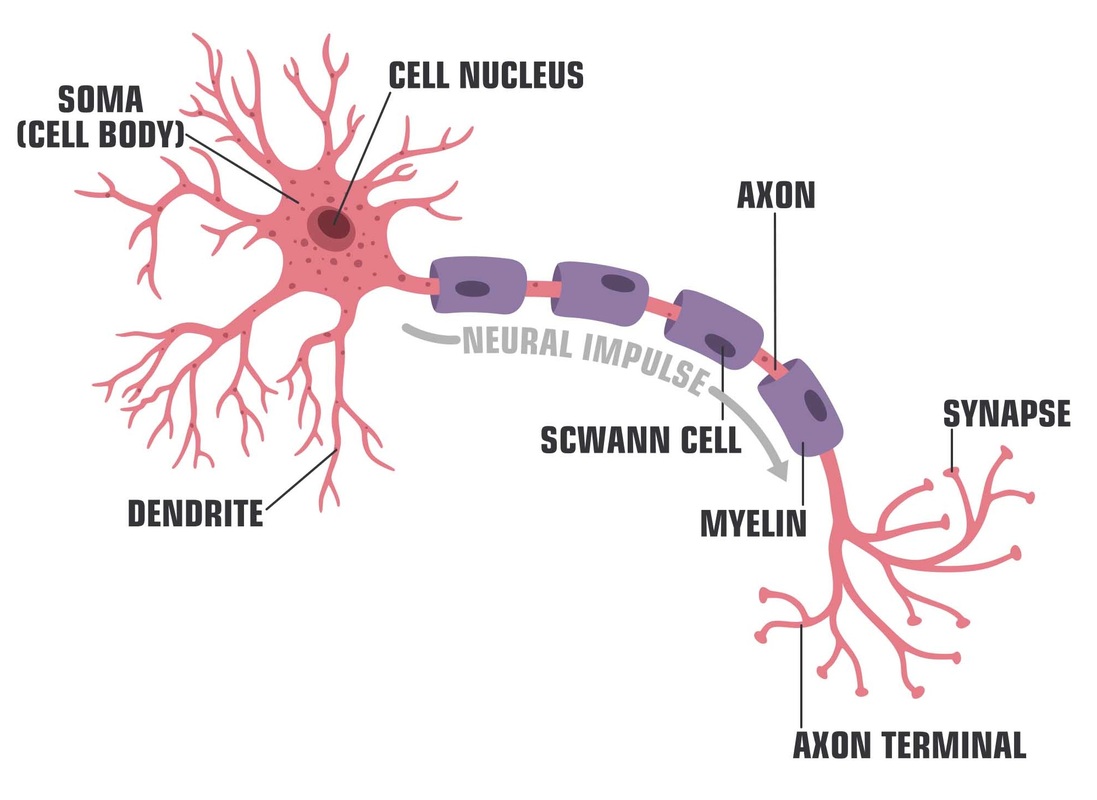12.1 The structure of a neuron
 The function of nerve cells is to sense and quickly transmit information in the body. A nerve cell that carries messages is called a neuron. The messages carried by neurons are called nerve impulses. Nerve impulses can travel very quickly, because they are electrical impulses.
The function of nerve cells is to sense and quickly transmit information in the body. A nerve cell that carries messages is called a neuron. The messages carried by neurons are called nerve impulses. Nerve impulses can travel very quickly, because they are electrical impulses.
All neurons consist of a cell center and one or more fibres. The cell center or soma contains the nucleus and other structures common to living cells. There are two kinds of nerve fibres: fibres that carry information towards the cell center, called dendrites, and fibres that carry information away from it, called axons. Nerves are tight bundles of nerve fibres. In most neurons, the cell center is connected to several dendrites but only one axon.
The fibres vary in length greatly. Some fibres are microscopic in size, whereas others are over 1 metre long. The longest cell in the human body links the central nervous system (the brain and the spinal cord) to other parts of the body.
Axons usually branch to connect to go to different neurons. Axon terminals at the end of axons make the actual connections with other neurons.
An axon terminal, as the name suggests, is literally the end an axon. A synapse is a structure which transmits (voltage/spike) information from one cell to another. Although they are often associated with each other, axon terminals and synapses are different, and you can have one without the other. The axon terminal contains neurotransmitters that can chemically transfer the nerve impulse to the next cell.
Some nerves are protected by a myelin sheath. Myelin provides the nerve with an insulating layer. The sheath protects the axon and allows electrical impulses to transmit quickly and efficiently along the neurons.
In multiple sclerosis (MS), the myelin sheath is damaged, causing nerve cells to malfunction. For example, the patient can develop visual and sensory impairments and experience muscle weakness.
Nerve cells are poorly regenerated in adults. However, the surrounding nerve cells can take on the role of a damaged nerve cell and form new connections with each other.

Left: A healthy myelin sheath with the corresponding nerve impulse. Right: A damaged myelin sheath with the corresponding nerve impulse.